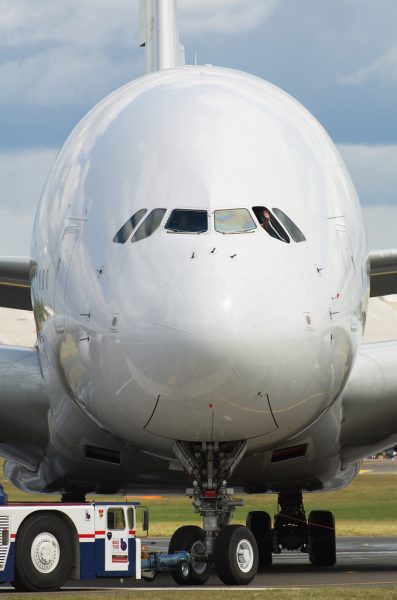We here at eJet are sad that the end of A380 production has been announced, and we are proud
to have been part of its story.
Whilst the A380 will be in the skies for many years to come, and continuing to visit many of the airports where we have worked or are currently working, it is inevitable that once production stops in 2021, like the B747 before it, fewer and fewer will be around. 
That only 313 will have been produced against current confirmed orders – compared with more than 1500 B747s – is testament to the fact that many airlines were not able to incorporate this very large aircraft into their fleet plans. One of the reasons it succeeded at all was that it enabled airlines to grow capacity into slot-restricted airports, such as London Heathrow. In other words, airlines could increase passenger numbers carried with the same number of flights.
The A380 did not really compete with the B747 because most of the latter had been produced before the A380 entered commercial service. Instead it competed with the B777 and B787, amongst others. This more or less vindicated Boeing’s point to point strategy over the hub and spoke principle that the A380 was designed for.
In terms of Aviation Fuel, whilst it has by far the largest fuel capacity of any airliner (320,000 litres compared with a B747-8’s 238,000 litres), with the exception of A380 hubs such as Dubai, the A380 does not on its own have a major impact upon fuel demand at airports. This is simply because there are relatively few of them in service, and relatively few visit any given airport on any given day.
The major impact has been on airport terminal upgrades that have been required to handle this aircraft. Passengers will be familiar with the boarding principle used at some airports whereby upper deck passengers board the aircraft through a third upper boarding bridge or jetway. However most will not be aware that in many cases the A380 has had a major impact upon an
airport’s fuel system.
At most large airports there is a fuel hydrant system, which similar to an urban fire water hydrant system, distributes in this case jet fuel around an airport to just where it is required at the aircraft parking stands. Aircraft are effectively connected by such a hydrant system to a very large fuel inventory at a remote fuel tank farm. This is the safest and most efficient way of fuelling aircraft with the large quantities of fuel required for long-haul flight. Fuel offtake points are located on each aircraft parking stand. These are called hydrant pits, and they are connected to the aircraft’s underwing fuelling point by hoses carried on small highly-specialised hydrant fuelling vehicles. The A380 has meant additional hydrant pits to enable the aircraft to fuel safely and efficiently from existing hydrant systems. Adding new hydrant pits is a major undertaking, and is often more challenging than installing new hydrant lines in new parts of an airport. This is because of safety considerations (connecting into live fuel lines) and operational disruption (relevant parts of an airport have to be closed to aircraft parking or manoeuvring). Accordingly such work requires a large amount of planning.
In the early 2000s, as airports were readying themselves for the advent of the A380, eJet carried out a major project at Singapore Changi Airport to upgrade the fuel hydrant system at some of the existing terminals. Because the aircraft has such a large wingspan, configuring an A380 parking stand often required additional hydrant pits. This also had a knock-on effect on adjacent parking stands along a concourse – they generally had to be adjusted. For example, the stand centreline had to be moved. As hydrant pits are usually pitched symmetrically either side of this centreline, the knock-on effect was also felt fuel-wise and a lot of hydrant pits had to be relocated.
Given the news on A380 production ceasing, we do not expect to be involved in other projects to configure or reconfigure fuel hydrants to serve this aircraft. However, there are many other reasons why hydrant systems have to be reconfigured and the expertise we have gained from the A380 work has proved valuable in these other applications. We remain ready to help with your hydrant system project whether it is a new one or a reconfiguration of an existing one!
Back to Latest News